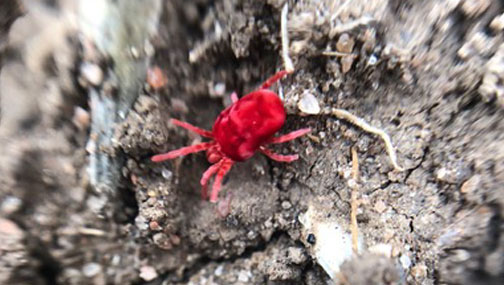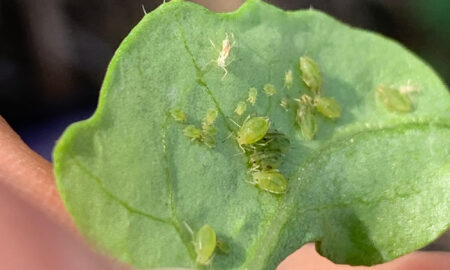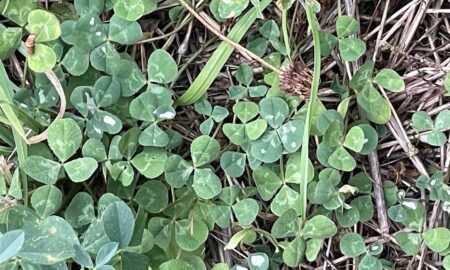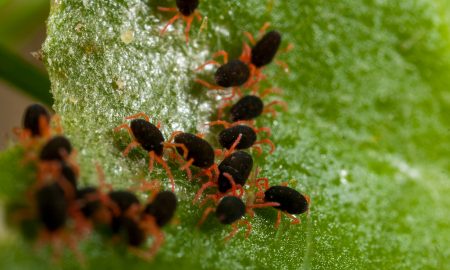Have you spotted big red, furry mites in your crops? Sounds like the stuff of nightmares, right? Don’t worry – they are probably beneficial red velvet mites.
Red velvet mites – if you have never seen them before, these beasties can elicit quite a shock at first glance, especially if there is a whole bunch of them.
But they are not a cause for concern. In fact, as generalist predators, red velvet mites are your ally.

A bit about red velvet mites
There are many species of red velvet mites and the life history of some can be a little complicated.
As larvae, many red velvet mites are thought to be parasitic to a variety of soil dwellers, and as they mature, they become free-living generalist predators.
Redlegged earth mites, blue oat mites and lucerne flea are all pests likely to be on the menu.
There are many species of red velvet mites and relative to other soil-dwelling mites, they are quite large – often more than 3 mm in length.
Their common name is derived from their bright red colour and their velvety appearance, attributed to the covering of short stout hairs on their body.
Whilst you would think that red velvet mites would stand out like a sore thumb amongst brown soil and a green canopy, they can go unnoticed, spending most of their time burrowed in the topsoil or beneath the soil surface litter.
Suspected impact of red velvet mites
So, will the presence of these predatory mites alone be enough to suppress pest populations?
Well, not alone.
But having an arsenal of natural enemies that include predatory mites is likely to be more effective at reducing pest numbers. So, don’t forget to factor in these good guys when making the decision to spray insecticides this spring.
Acknowledgements
Field observations
Matthew Bissett, AGRIvision (Wimmera, VIC)
Jamie Pursehouse, Landmark (Riverina, NSW)
Cover image: Photo by Daniel Andrews





